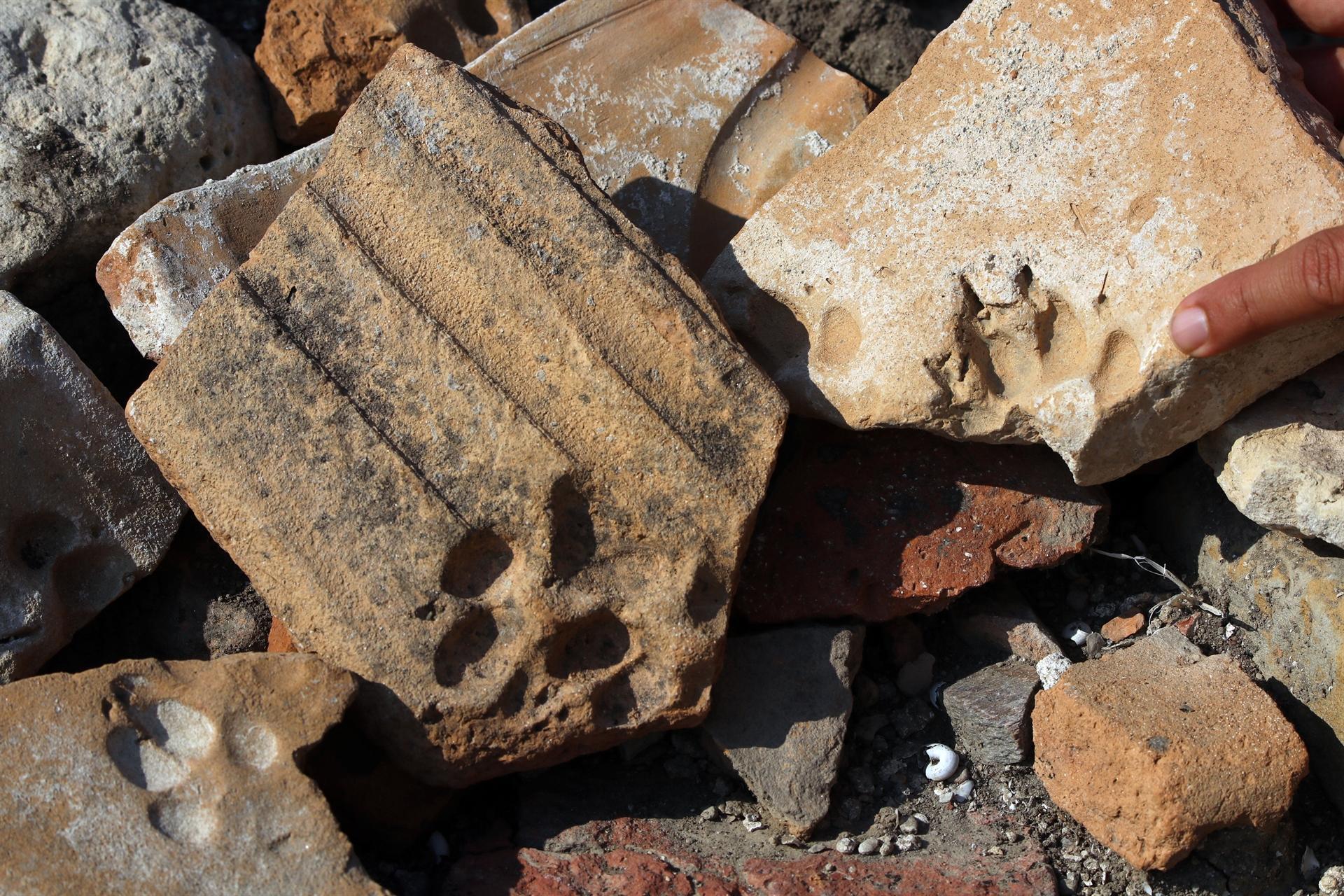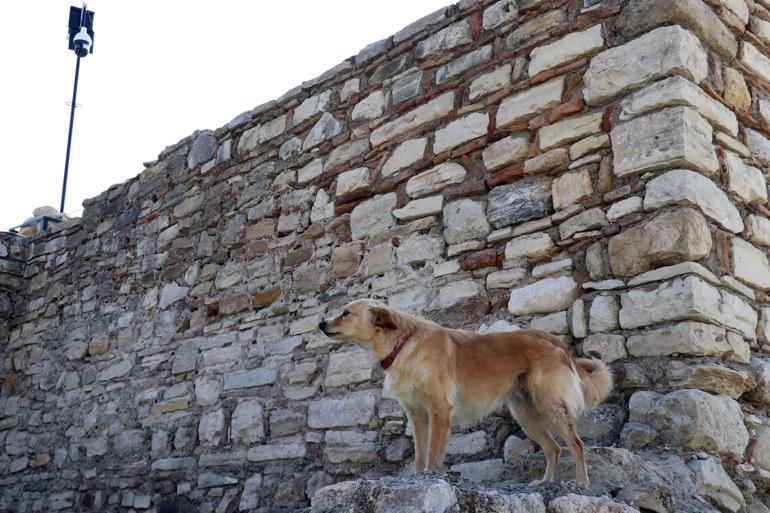
Archaeological excavations at the ancient Kadıkalesi (Kadı Castle), formerly known as “Anaia,” in the Kuşadası district of Aydın, have revealed paw prints of cats and dogs on bricks and tiles dating back to the 8th century.
Findings from the ancient social and commerce life were unearthed during the excavations at the archaeological site, located eight kilometers from the city center and whose history dates back 5,000 years.
Excavations have been carried out by Ege University’s Byzantium Art Department head Zeynep Mercangöz in the ancient site, where ceramics have an important place among the findings.
The presence of scores of ceramics in different colors, shapes and designs confirms that there was a rich production capacity in Kadıkalesi, according to officials.
The castle was used during every period in history due to its strategic importance.
Speaking to state-run Anadolu Agency, Mercangöz said the castle had served as an acropolis for many years and was home to a church built in the 5th century.
Despite being owned by the Ottomans in 1413, the castle was not used until WWI, when the Ottomans used it as a shield, said Mercangöz, adding that the Ottomans had built a small mosque next to a church there.
She said the proximity of the castle, mosque and church is important, as it creates ease for tourists who want to make the most out of their trips.

Past earthquakes had ruined the ancient columns and blocks, however, after maintenance works they have been erected back in their original places, she added.
Mercangöz said their examinations on the brick and tile pieces gave very intriguing results.
“All pieces of potteries that we found in the field are being displayed close to their place. Most of them have the traces of animal paws, mostly cats and dogs. These traces belong to animals which walked on these potteries when they were left to dry by producers. They are all from the Middle Age, dating back 800 years. Each piece is very exciting for us. It reveals that animals and people lived together at that time. Our zoology studies also give us many findings. We found many dog skulls this year.”
Referring to trade relations with Venice during the Byzantine period, Mercangöz stated that there was a vivid commercial life and that they brought goods from the Eastern Mediterranean and brought wine from there to Italy.
“This is a period of such international commercial dimension. They probably took their masters together when they left, because the glass production here was very important in the Middle Ages. Byzantine historians say in many places that Byzantine masters especially started Venetian glass. But I think glass masters who were taken from Kadıkalesi were the reason for the start of Italian glass,” she said.